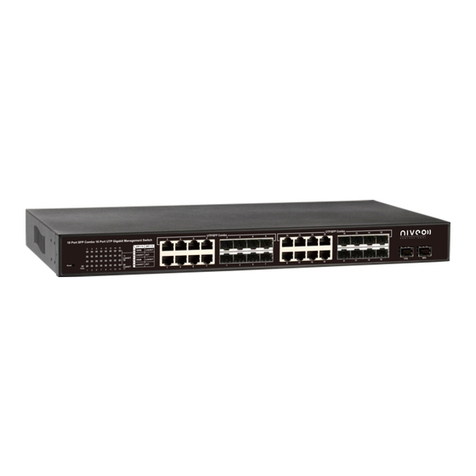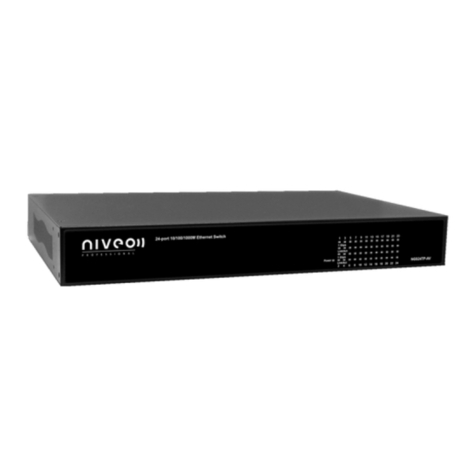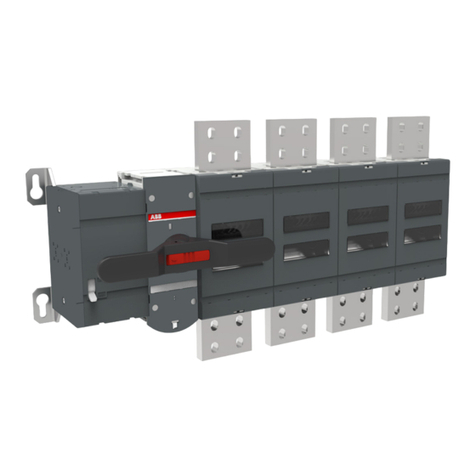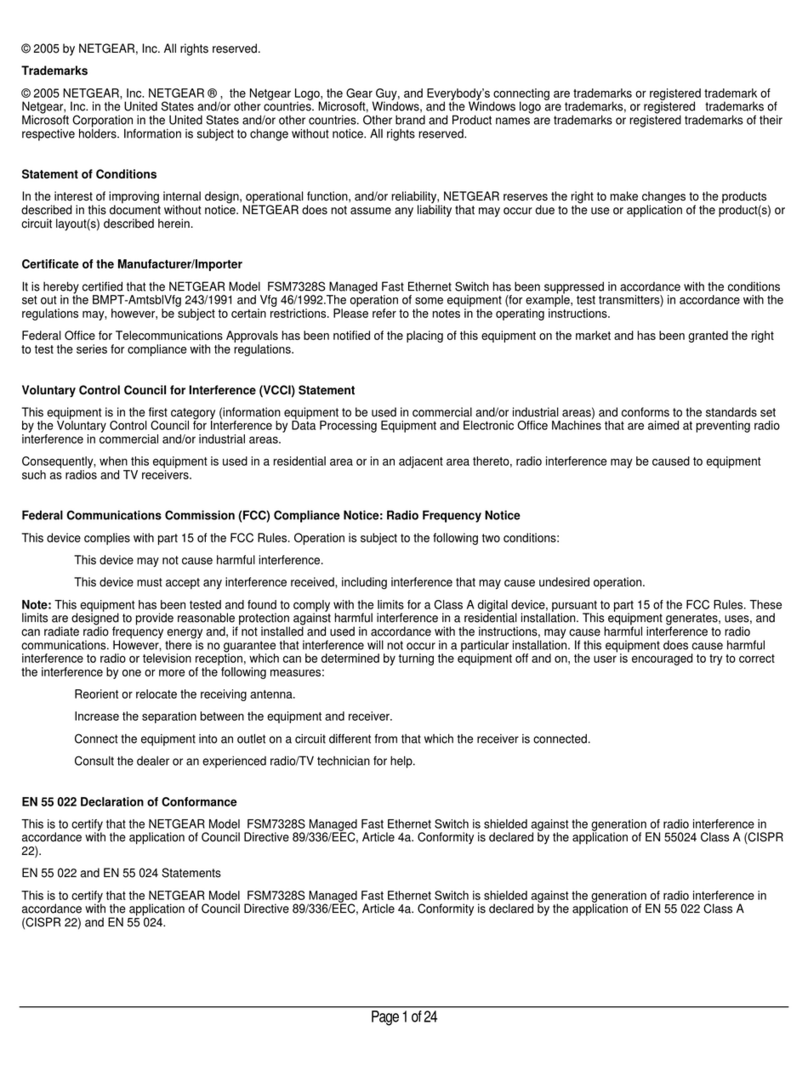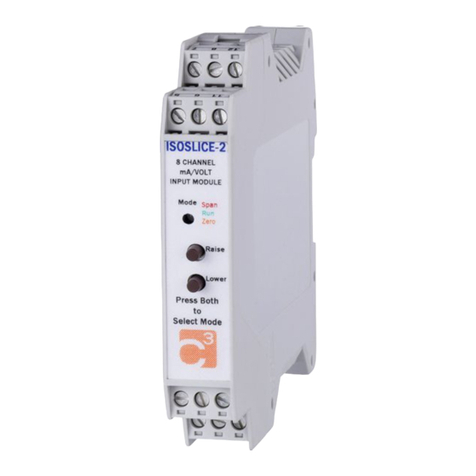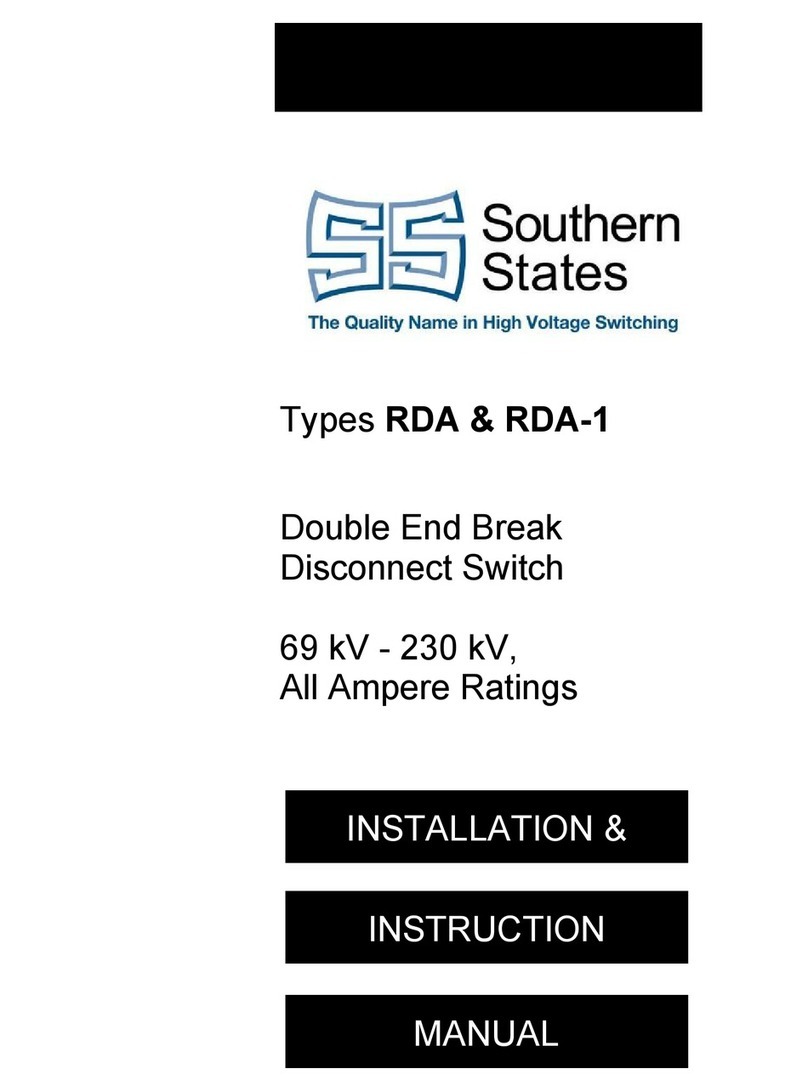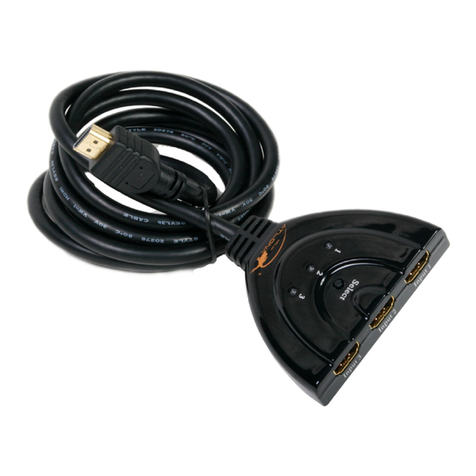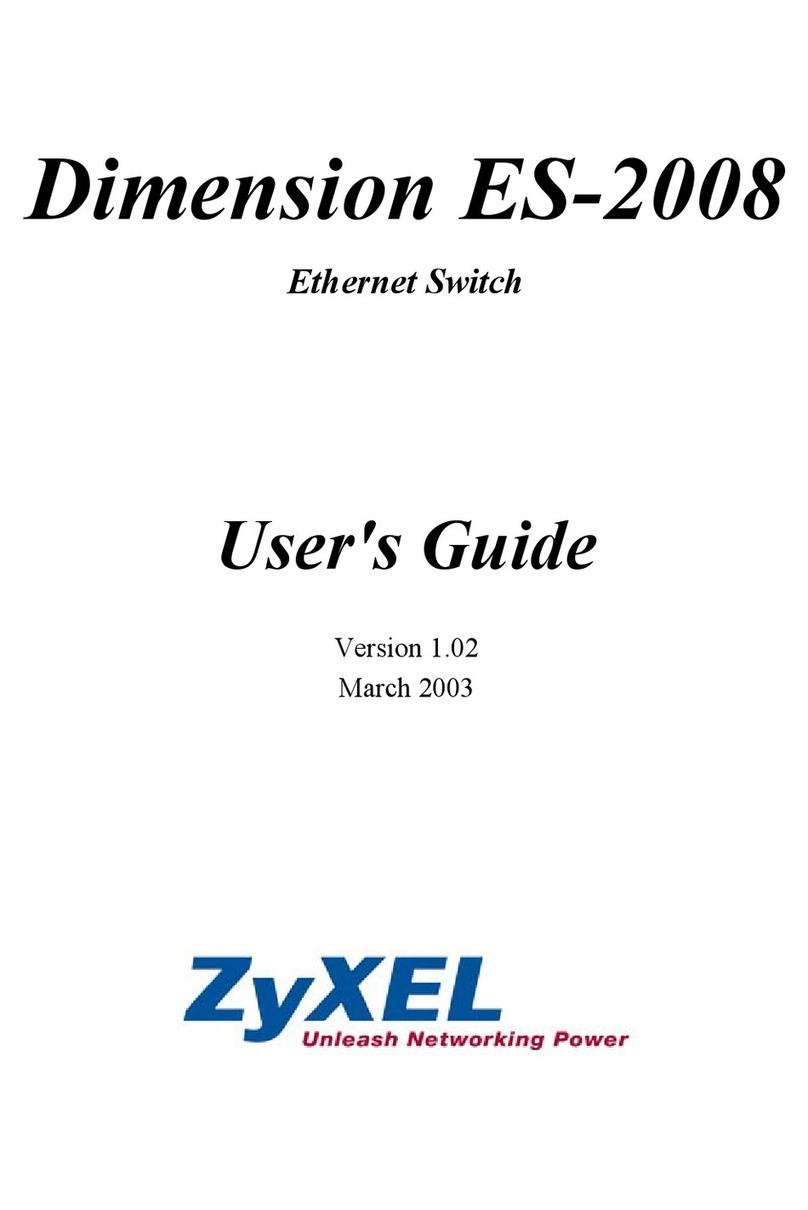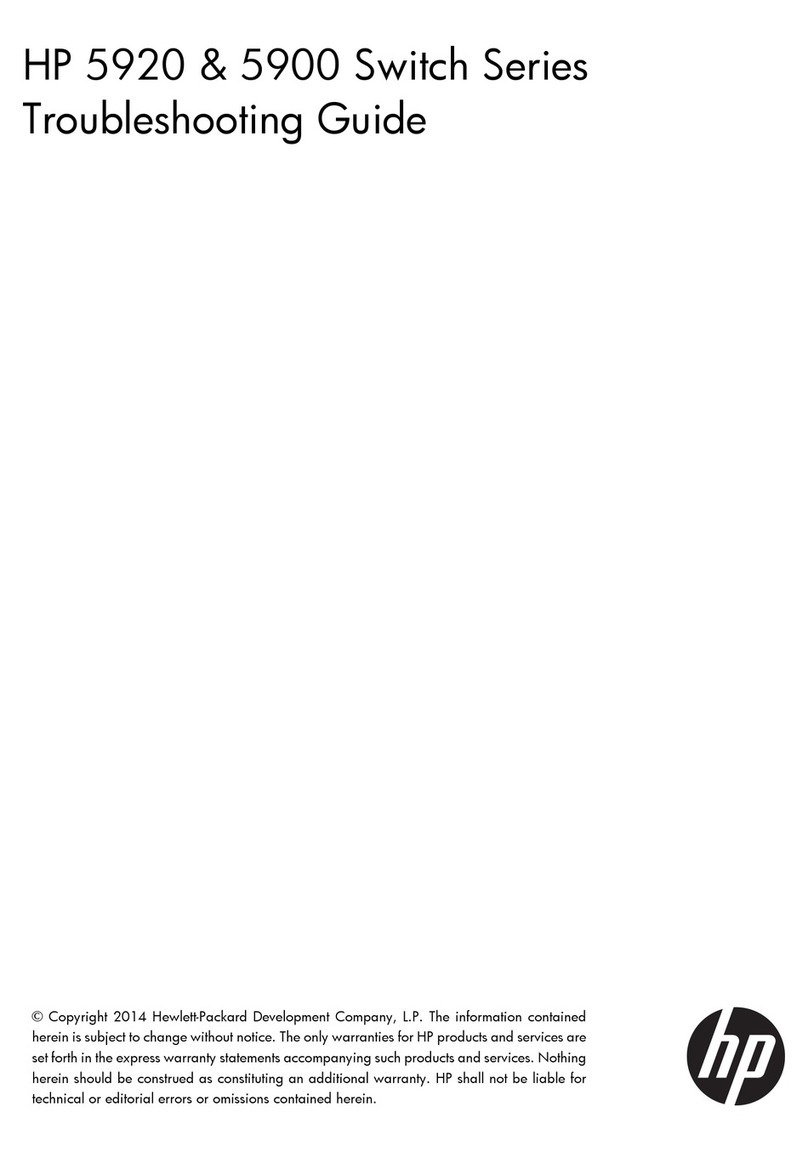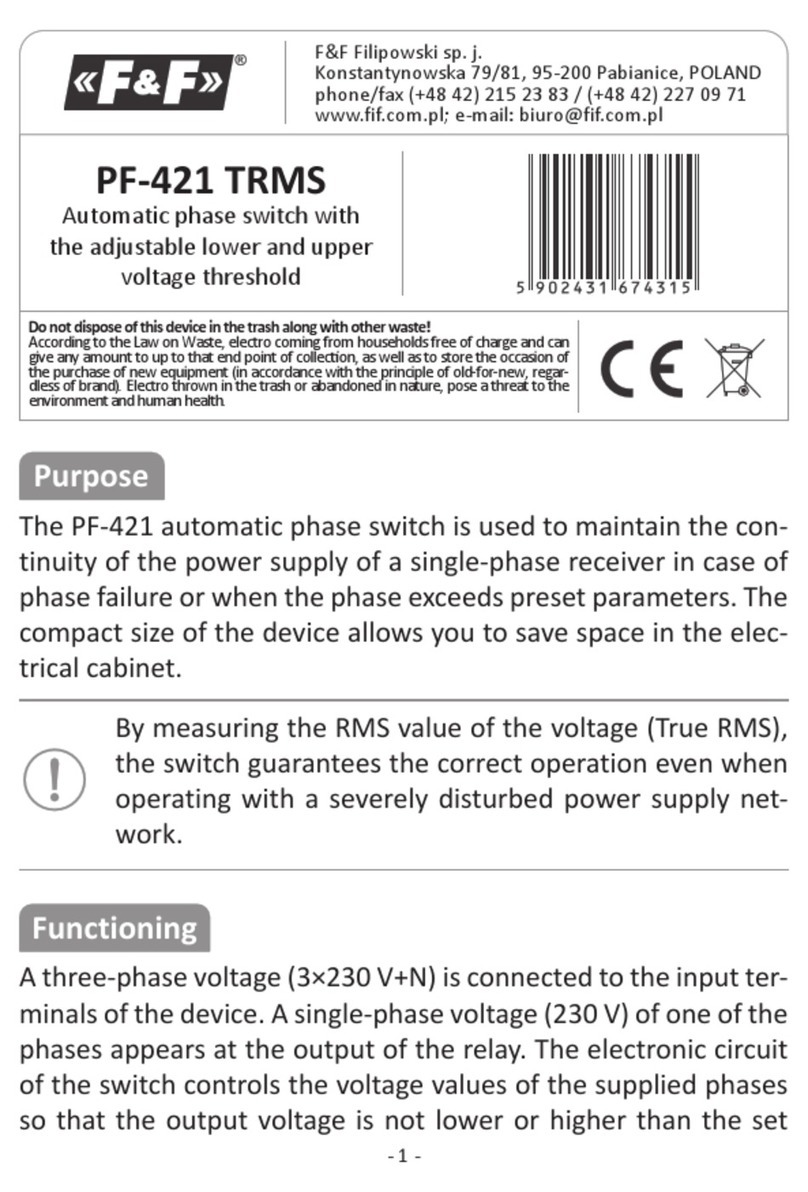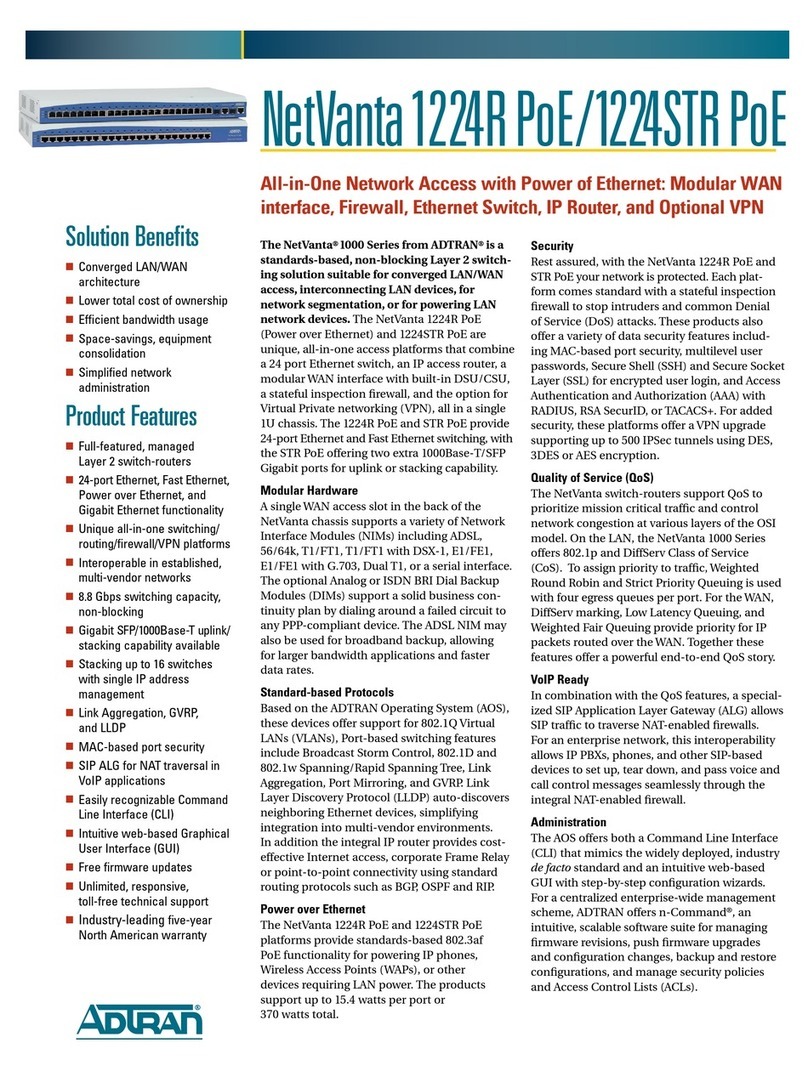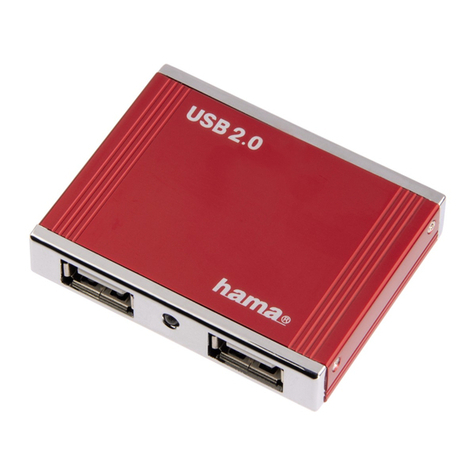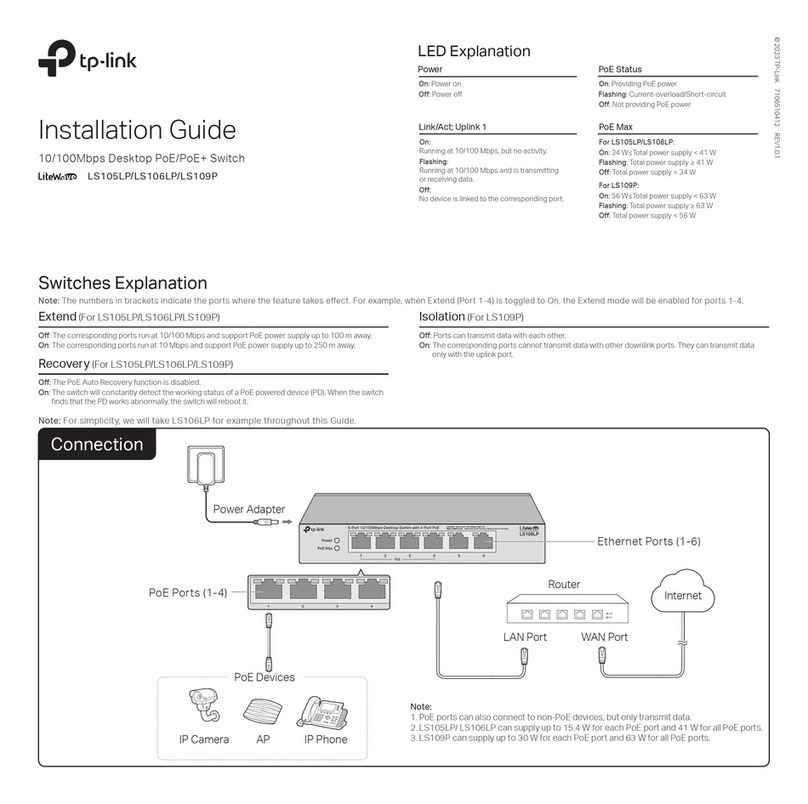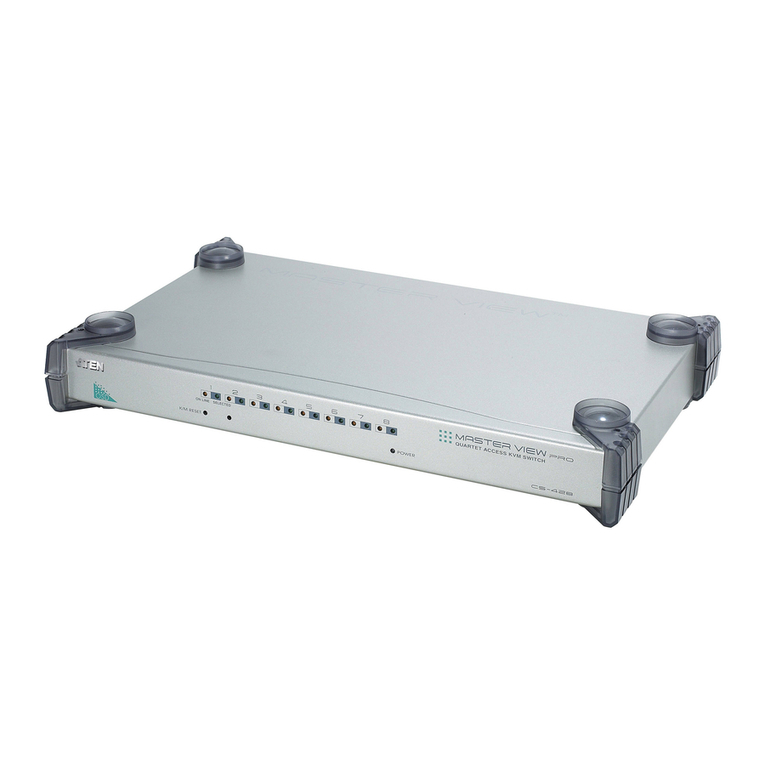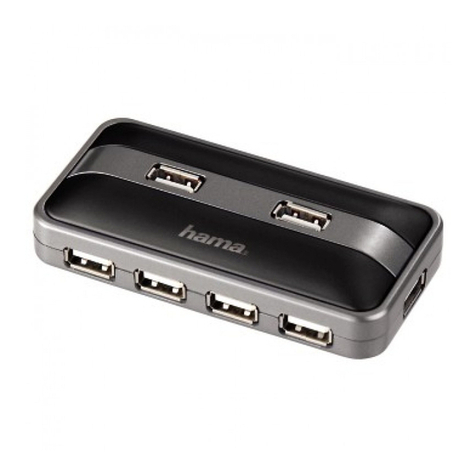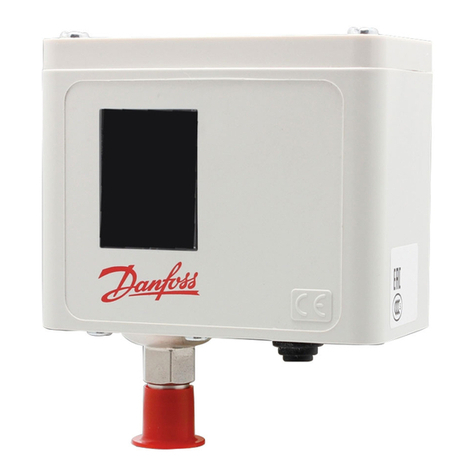Niveo NGSME48T4H User manual

Version 2.1
NGSME48T4H
48-Port 10/100/1000Base-T + 4 × 10 Gigabit SFP+ Ports Layer 2/3
Full Management High Power PoE Switch
User Manual

FCC/CE Mark Warning
NGSME48T4H Switch User Manual | 2
FCC Warning
This Equipment has been tested and found to comply with the limits for a Class-A digital
device, pursuant to Part 15 of the FCC rules. These limits are designed to provide reasonable
protection against harmful interference in a residential installation. This equipment generates,
uses, and can radiate radio frequency energy. It may cause harmful interference to radio
communications if the equipment is not installed and used in accordance with the instructions.
However, there is no guarantee that interference will not occur in a particular installation. If
this equipment does cause harmful interference to radio or television reception, which can be
determined by turning the equipment off and on, the user is encouraged to try to correct the
interference by one or more of the following measures:
Reorient or relocate the receiving antenna.
Increase the separation between the equipment and receiver.
Connect the equipment into an outlet on a circuit different from that to which the
receiver is connected.
Consult the dealer or an experienced radio/TV technician for help.
CE Mark Warning
This is a Class-B product. In a domestic environment this product may cause radio
interference in which case the user may be required to take adequate measures.

Table of Contents
PoE Switch User Manual | 3
Table of Contents
Before Starting............................................................................................................................ 9
Intended Readers...................................................................................................................10
Icons for Note, Caution, and Warning ..................................................................................10
Product Package Contents....................................................................................................11
Chapter 1: Product Overview.................................................................................................12
1.1. Product Brief Description...............................................................................................13
1.2. Product Specification .....................................................................................................15
1.3. Hardware Description.....................................................................................................17
1.4. Hardware Installation......................................................................................................18
Chapter 2: Preparing for Management ..................................................................................19
2.1. Preparation for Web Interface ........................................................................................20
Chapter 3: Web Management.................................................................................................22
3.1. Web Management - Configure........................................................................................23
3.1.1. Configuration - System ............................................................................................25
3.1.1.1. System - Information .........................................................................................25
3.1.1.2. System - IP .........................................................................................................26
3.1.1.3. System - NTP......................................................................................................30
3.1.1.4. System - Time.....................................................................................................31
3.1.1.5. System - Log ......................................................................................................33
3.1.2. Configuration - Green Ethernet ...............................................................................34
3.1.2.1. Green Ethernet - LED.........................................................................................34
3.1.2.2. Green Ethernet - Port Power Savings...............................................................36
3.1.3. Configuration - Ports................................................................................................38
3.1.4. Configuration - DHCP...............................................................................................40
3.1.4.1. DHCP - Server ....................................................................................................40
3.1.4.1.1. DHCP - Server - Mode..................................................................................40
3.1.4.1.2. DHCP - Server - Excluded IP.......................................................................42
3.1.4.1.3. DHCP - Server - Pool...................................................................................43
3.1.4.2. DHCP - Snooping...............................................................................................45
3.1.4.3. DHCP - Relay......................................................................................................46
3.1.5. Configuration - Security...........................................................................................48
3.1.5.1. Security - Switch - Users...................................................................................48
3.1.5.2. Security - Switch - Privilege Level ....................................................................50
3.1.5.3. Security - Switch - Authentication Method.......................................................52
3.1.5.4. Security - Switch - SSH......................................................................................53

Table of Contents
PoE Switch User Manual | 4
3.1.5.5. Security - Switch - HTTPS .................................................................................54
3.1.5.6. Security - Switch - Access Management ..........................................................55
3.1.5.7. Security - Switch - SNMP...................................................................................56
3.1.5.7.1. Security - Switch - SNMP - System.............................................................56
3.1.5.7.2. Security - Switch - SNMP - Community......................................................60
3.1.5.7.3. Security - Switch - SNMP - User .................................................................61
3.1.5.7.4. Security - Switch - SNMP - Groups.............................................................63
3.1.5.7.5. Security - Switch - SNMP - Views ...............................................................64
3.1.5.7.6. Security - Switch - SNMP - Access.............................................................65
3.1.5.8. Security - Switch - RMON..................................................................................66
3.1.5.8.1. Security - Switch - RMON - Statistics.........................................................66
3.1.5.8.2. Security - Switch - RMON - History ............................................................67
3.1.5.8.3. Security - Switch - RMON - Alarm...............................................................68
3.1.5.8.4. Security - Switch - RMON - Event...............................................................70
3.1.5.9. Security - Network - Limit Control ....................................................................71
3.1.5.10. Security - Network - NAS (Network Access Server).......................................74
3.1.5.11. Security - Network - ACL..................................................................................85
3.1.5.11.1. Security - Network - ACL - Ports...............................................................85
3.1.5.11.2. Security - Network - ACL - Rate Limiter....................................................87
3.1.5.11.3. Security - Network - ACL - Access Control List.......................................88
3.1.5.12. Security - Network - IP Source Guard...........................................................104
3.1.5.12.1. Security - Network - IP Source Guard - Configuration..........................104
3.1.5.12.2. Security - Network - IP Source Guard - Static Table..............................105
3.1.5.13. Security - Network - ARP Inspection.............................................................106
3.1.5.13.1. Security - Network - ARP Inspection - Configuration............................106
3.1.5.13.2. Security - Network - ARP Inspection - Static Table................................107
3.1.5.14. Security - AAA................................................................................................108
3.1.6. Configuration - Aggregation..................................................................................112
3.1.6.1. Aggregation - Static .........................................................................................112
3.1.6.2. Aggregation - LACP.........................................................................................114
3.1.7. Configuration - Loop Protection............................................................................116
3.1.8. Configuration - Spanning Tree...............................................................................118
3.1.8.1. Spanning Tree - Bridge Settings.....................................................................118
3.1.8.2. Spanning Tree - MSTI Mapping .......................................................................120
3.1.8.3. Spanning Tree - MSTI Priorities.......................................................................122
3.1.8.4. Spanning Tree - CIST Ports .............................................................................123
3.1.8.5. Spanning Tree - MSTI Ports.............................................................................126

Table of Contents
PoE Switch User Manual | 5
3.1.9. Configuration - IPMC Profile..................................................................................128
3.1.9.1. IPMC Profile - Profile Table..............................................................................128
3.1.9.2. IPMC Profile - Address Entry...........................................................................130
3.1.10. Configuration - MVR.............................................................................................131
3.1.11. Configuration - IPMC............................................................................................135
3.1.11.1. IPMC - IGMP Snooping...................................................................................135
3.1.11.1.1. IPMC - IGMP Snooping - Basic Configuration........................................135
3.1.11.1.2. IPMC - IGMP Snooping - VLAN Configuration .......................................137
3.1.11.1.3. IPMC - IGMP Snooping - Port Group Filtering........................................139
3.1.11.2. IPMC - MLD Snooping....................................................................................140
3.1.11.2.1. IPMC - MLD Snooping - Basic Configuration.........................................140
3.1.11.2.2. IPMC - MLD Snooping - VLAN Configuration.........................................142
3.1.11.2.3. IPMC - MLD Snooping - Port Group Filtering.........................................144
3.1.12. Configuration - LLDP............................................................................................145
3.1.12.1. LLDP - LLDP...................................................................................................145
3.1.12.2. LLDP - LLDP-MED..........................................................................................148
3.1.13. Configuration - PoE..............................................................................................155
3.1.14. Configuration - MAC Table...................................................................................158
3.1.15. Configuration - VLANs .........................................................................................160
3.1.16. Configuration - Private VLAN ..............................................................................165
3.1.16.1. Private VLAN - Port Isolation.....................................................................165
3.1.17. Configuration - VCL..............................................................................................166
3.1.17.1. VCL - MAC-based VLAN ................................................................................166
3.1.17.2. VCL - Port-based VLAN .................................................................................168
3.1.17.2.1. VCL - Port-based VLAN - Protocol to Group..........................................168
3.1.17.2.2. VCL - Port-based VLAN - Group to VLAN ..............................................170
3.1.17.3. VCL - IP Subnet-based VLAN ........................................................................171
3.1.18. Configuration - Voice VLAN.................................................................................173
3.1.18.1. Voice VLAN - Configuration...........................................................................173
3.1.18.2. Voice VLAN - OUI ...........................................................................................175
3.1.19. Configuration - QoS..............................................................................................176
3.1.19.1. QoS - Port Classification...............................................................................176
3.1.19.2. QoS - Port Policing ........................................................................................178
3.1.19.3. QoS - Port Scheduler.....................................................................................179
3.1.19.4. QoS - Port Shaping........................................................................................184
3.1.19.5. QoS - Port Tag Remarking.............................................................................189
3.1.19.6. QoS - Port DSCP ............................................................................................192

Table of Contents
PoE Switch User Manual | 6
3.1.19.7. QoS - DSCP-Based QoS ................................................................................194
3.1.19.8. QoS - DSCP Translation.................................................................................195
3.1.19.9. QoS - DSCP Classification.............................................................................196
3.1.19.10. QoS - Storm Control.....................................................................................197
3.1.19.11. QoS - WRED..................................................................................................198
3.1.20. Configuration - Mirroring .....................................................................................200
3.1.21. Configuration - UPnP ...........................................................................................202
3.1.22. Configuration - GVRP...........................................................................................203
3.1.22.1. GVRP - Global Config ....................................................................................203
3.1.22.2. GVRP - Port Config ........................................................................................204
3.1.23. Configuration - sFlow...........................................................................................205
3.2. Web Management - Monitor .........................................................................................208
3.2.1. Monitor - System ....................................................................................................208
3.2.1.1. System - Information .......................................................................................208
3.2.1.2. System - CPU Load..........................................................................................210
3.2.1.3. System - IP Status............................................................................................211
3.2.1.4. System - Log ....................................................................................................213
3.2.1.5. System - Detailed Log......................................................................................214
3.2.2. Monitor - Green Ethernet .......................................................................................215
3.2.2.1. Green Ethernet - Port Power Savings Status .................................................215
3.2.3. Monitor - Ports........................................................................................................216
3.2.3.1. Ports - State......................................................................................................216
3.2.3.2. Ports - Traffic Overview ...................................................................................217
3.2.3.3. Ports - QoS Statistics.......................................................................................218
3.2.3.4. Ports - Detailed Statistics ................................................................................219
3.2.4. Monitor - DHCP.......................................................................................................222
3.2.4.1. DHCP - Server ..................................................................................................222
3.2.4.1.1. DHCP - Server - Statistics .........................................................................222
3.2.4.1.2. DHCP - Server - Binding............................................................................224
3.2.4.1.3. DHCP - Server - Declined IP......................................................................225
3.2.4.2. DHCP - Snooping Table ...................................................................................226
3.2.4.3. DHCP - Relay Statistics....................................................................................228
3.2.4.4. DHCP - Detailed Statistics ...............................................................................230
3.2.5. Monitor - Security...................................................................................................232
3.2.5.1. Security - Access Management Statistics ......................................................232
3.2.5.2. Security - Network............................................................................................233
3.2.5.2.1. Security - Network - Port Security - Switch..............................................233

Table of Contents
PoE Switch User Manual | 7
3.2.5.2.2. Security - Network - Port Security - Port..................................................236
3.2.5.2.3. Security - Network - NAS - Switch............................................................237
3.2.5.2.4. Security - Network - NAS - Port ................................................................239
3.2.5.2.5. Security - Network - ACL Status ...............................................................244
3.2.5.2.6. Security - Network - ARP Inspection........................................................246
3.2.5.3. Security - Network............................................................................................250
3.2.5.3.1. Security - AAA - RADIUS Overview ..........................................................250
3.2.5.3.2. Security - AAA - RADIUS Details...............................................................252
3.2.5.4. Security - Switch - RMON................................................................................256
3.2.5.4.1. Security - Switch - RMON - Statistics.......................................................256
3.2.5.4.2. Security - Switch - RMON - History ..........................................................259
3.2.5.4.3. Security - Switch - RMON - Alarm.............................................................261
3.2.5.4.4. Security - Switch - RMON - Events...........................................................263
3.2.6. Monitor - LACP .......................................................................................................264
3.2.6.1. LACP - System Status......................................................................................264
3.2.6.2. LACP - Port Status ...........................................................................................265
3.2.6.3. LACP - Port Statistics ......................................................................................266
3.2.7. Monitor - Loop Protection......................................................................................267
3.2.8. Monitor - Spanning Tree.........................................................................................268
3.2.8.1. Spanning Tree - Bridge Status ........................................................................268
3.2.8.2. Spanning Tree - Port Status.............................................................................269
3.2.8.3. Spanning Tree - Port Statistics........................................................................270
3.2.9. Monitor - MVR.........................................................................................................271
3.2.9.1. MVR - Statistics................................................................................................271
3.2.9.2. MVR - MVR Channel Groups ...........................................................................272
3.2.9.3. MVR - MVR SFM Information...........................................................................273
3.2.10. Monitor - IPMC......................................................................................................275
3.2.10.1. IPMC - IGMP Snooping ..................................................................................275
3.2.10.1.1. IPMC - IGMP Snooping - Status..............................................................275
3.2.10.1.2. IPMC - IGMP Snooping - Groups Information........................................277
3.2.10.1.3. IPMC - IGMP Snooping - IPv4 SFM Information.....................................278
3.2.10.2. IPMC - MLD Snooping....................................................................................280
3.2.10.2.1. IPMC - MLD Snooping - Status................................................................280
3.2.10.2.2. IPMC - MLD Snooping - Groups Information .........................................282
3.2.10.2.3. IPMC - MLD Snooping - IPv6 Group Information...................................283
3.2.11. Monitor - LLDP......................................................................................................285
3.2.11.1. LLDP - Neighbours.........................................................................................285

Table of Contents
PoE Switch User Manual | 8
3.2.11.2. LLDP - LLDP-MED Neighbours......................................................................287
3.2.11.3. LLDP - PoE......................................................................................................291
3.2.11.4. LLDP - EEE .....................................................................................................293
3.2.11.5. LLDP - Port Statistics.....................................................................................295
3.2.12. Monitor - PoE........................................................................................................297
3.2.13. Monitor - MAC Table.............................................................................................299
3.2.14. Monitor - VLANs ...................................................................................................301
3.2.14.1. VLANs - VLAN Membership...........................................................................301
3.2.14.2. VLANs - VLAN Ports ......................................................................................303
3.2.15. Monitor - sFlow.....................................................................................................305
3.3. Web Management - Diagnostics ..................................................................................307
3.3.1. Diagnostics - Ping..................................................................................................307
3.3.2. Diagnostics - Ping6 ................................................................................................309
3.3.3. Diagnostics - VeriPHY............................................................................................310
3.4. Web Management - Maintenance.................................................................................312
3.4.1. Maintenance - Restart Device................................................................................312
3.4.2. Maintenance - Factory Defaults.............................................................................313
3.4.3. Maintenance - Software Upload.............................................................................314
3.4.3. Maintenance - Configuration .................................................................................315
3.4.3.1. Configuration - Save........................................................................................315
3.4.3.2. Configuration - Load........................................................................................316
Appendix A: Product Safety ...................................................................................................317
Appendix B: IP Configuration for Your PC ............................................................................318
Appendix C: Glossary.............................................................................................................321
Revision History......................................................................................................................338

Before Starting
NGSME48T4H Switch User Manual | 10
Intended Readers
This manual provides information regarding to all the aspects and functions needed to install,
configure, use, and maintain the product you’ve purchased.
This manual is intended for technicians who are familiar with in-depth concepts of networking
management and terminologies.
Icons for Note, Caution, and Warning
To install, configure, use, and maintain this product properly, please pay attention when you
see these icons in this manual:
A Note icon indicates important information which will guide you to use this
product properly.
A Caution icon indicates either a potential for hardware damage or data
loss, including information that will guide you to avoid these situations.
A Warning icon indicates potentials for property damage and personal
injury.

Before Starting
PoE Switch User Manual | 11
Product Package Contents
Before starting install this product, please check and verify the contents of the product
package, which should include the following items:
One Network Switch
One Power Cord
One User Manual CD
One pair Rack-mount kit + 8 Screws
Note: If any item listed in this table above is missing or damaged, please contact your
distributor or retailer as soon as possible.

NGSME48T4H Switch User Manual | 12
Chapter 1:
Product Overview
In Product Overview:
This section will give you an overview of this product, including its feature
functions and hardware/software specifications.
Product Brief Description
Product Specification
Hardware Description
Hardware Installation

Chapter 1: Product Overview
Product Brief Description
NGSME48T4H Switch User Manual | 13
1.1. Product Brief Description
Introduction
The switch is 48-port 10 Base-T /100 Base-TX /1000Base-T + 4 x 10 Gigabit SFP+ Ports
Rack-mount L2+ Full Management Network Switch that is designed for medium or large
network environment to strengthen its network connection. The switch supports 176G
non-blocking switch fabric, the 48 gigabit ports and 4 uplink 10G ports can transmit and
receive data traffic without any lost. The EEE feature reduces the power consumption when
there is no traffic forwarding even port is still connected. The switch also supports Layer 2+
full management software features. These features are powerful to provide network control,
management, monitor and security feature requests. Including rack-mount brackets, the 19"
size fits into your rack environment. It is a superb choice to boost your network with better
performance and efficiency.
Four 10 Gigabit SFP+ Open Slots
The switch equips with 4x 10G SFP+ open slots as the uplink ports, the 10G uplink design
provides an excellent solution for expanding your network from 1G to 10G. By 10G speed, this
product provides high flexibility and high bandwidth connectivity to another 10G switch or the
Servers, Workstations and other attached devices which support 10G interfaces. The user
can also aggregate the 10G ports as Trunk group to enlarge the bandwidth.
IEEE 802.3at/af Power over Ethernet (PoE) ports
This product can convert standard 100~240V/AC power into low-voltage DC that runs over
existing LAN cable to power up IEEE 802.3at/af compliant network accessories. It also
features PoE awareness to verify whether the network device receive power is IEEE
802.3at/af compliant, or only the data will be sent through LAN cable. By adding the switch to
the existing networking, installing networking products such asAccess Points and IP cameras
can be easily managed and set up.
Full Layer 2+ Management Features
The switch includes full Layer 2+ Management features. The software set includes up to 4K
802.1Q VLAN and advanced Protocol VLAN, Private VLAN, MVR…advanced VLAN features.
There are 8 physical queues Quality of Service, IPv4/v6 Multicast filtering, Rapid Spanning
Tree protocol to avoid network loop, Multiple Spanning Tree Protocol to integrate VLAN and
Spanning Tree, LACP, LLDP; sFlow, port mirroring, cable diagnostic and advanced Network
Security features. It also provides Console CLI for out of band management and SNMP, Web
GUI for in band Management.

Chapter 1: Product Overview
Product Specification
PoE Switch User Manual | 14
Advanced Security
The switch supports advanced security features. For switch management, there are secured
HTTPS and SSH, the login password, configuration packets are secured. The port binding
allows to bind specific MAC address to the port, only the MAC has the privilege to access the
network. The 802.1X port basedAccess Control, every user should be authorized first when
they want to access the network. AAA is the short of the Authentication,Authorization and
Accounting with RADIUS, TACAS+ server. Layer 2+ Access Control List allows user to define
the access privilege based on IP, MAC, Port number…etc.
PD Alive Check
When this function is enabled, this switch will detect a network PoE powered device (for
example, an IP CAM) with a set of IP address periodically. If the switch doesn’t get any replies
from the network PoE powered device, this switch will do a power cycle (PoE power OFF, and
PoE power ON) to the port that connects the network PoE powered device, allowing that
device to reboot. You can set the frequency of detecting, number of times of detecting, and
the time period to perform power cycle when there’s no reply via the switch’s PoE
configuration web page.

Chapter 1: Product Overview
Product Specification
NGSME48T4H Switch User Manual | 15
1.2. Product Specification
Interface
10 Base-T /100 Base-TX /1000 Base-T RJ45 Ports
48
10G SFP+ Slot
4
Console Port for CLI Management
1
System Performance
Packet Buffer
32Mbits
MAC Address Table Size
32K
Switching Capacity
176Gbps
Forwarding Rate
130.94Mpps
PoE Features
IEEE 802.3 af/at
IEEE 802.3 af/at
Number of PSE Ports
48
Max. PoE Budget
750W
External/Internal Power
Internal Power
Power Feeding Detecting Capability on PD
PD Alive Check
PD Classification
Power Management (per-port)
Enable/Disable PoE Per Port
Priority Setting Per Port
Power Level Setting Per Port
Overloading Protection
L2 Features
Auto-negotiation
Auto MDI/MDIX
Flow Control (duplex)
802.3x (Full)
Back-Pressure (Half)
Spanning Tree
IEEE 802.1D (STP)
IEEE 802.1w (RSTP)
IEEE 802.1s (MSTP)
VLAN
VLAN Group
4K
Tagged Based
Port-based
Voice VLAN
Voice VLAN with OUI
Link Aggregation
IEEE 802.3ad with LACP
Static Trunk
Max. No. Static Trunk Group
26
Max. Port per Aggregation Group
8
IGMP Snooping
IGMP Snooping v1/v2/v3
Supports 1024 IGMP groups
IGMP Static Multicast Addresses
Supports 1024 static multicast addresses
IPv6 MLD Snooping
Supports 1024 MLD groups
MLD Static Multicast Addresses
Supports 1024 static multicast addresses
Querier, Immediate Leave
Storm Control (Broadcast/Multi-cast/Un-known Unicast)
Jumbo Frame Support
9.6KB
QoS Features
Number of priority queue
8 queues/port
Rate Limiting
Ingress
Yes, 1KBps/1pps
Egress
Yes, 1KBps/1pps
Mapping Table entries
Ingress
4K
Egress
8K
DiffServ (RFC2474 Remarking)
Scheduling (WRR, Strict, Hybrid)
CoS
IEEE 802.1p
IP ToS precedence, IP DSCP
Security
Management System User Name/Password Protection
User Privilege
Set user privilege up to 15 Level
Port Security (MAC-based)
IEEE 802.1x Port-based Access Control
ACL (L2/L3/L4)
IP Source Guard
RADIUS (Authentication, Authorization, Accounting)
TACACS+
HTTP & SSL (Secure Web)
SSH v2.0 (Secured Telnet Session)
MAC/IP Filter

Chapter 1: Product Overview
Product Specification
PoE Switch User Manual | 16
Management
Command Line Interface (CLI)
Web Based Management
Telnet
Access Management Filtering
SNMP/WEB/SSH/TELNET
Firmware Upgrade via HTTP
Dual Firmware Images
Configuration Download/Upload
SNMP (v1/v2c/v3)
RMON (1,2,3,&9 groups)
DHCP (Server/Client/Relay/Option82/Snooping)
System Event/Error Log
NTP/LLDP
Cable Diagnostics
IPv6 Configuration
Port Mirroring
Many to One
Virtual Stacking
Mechanical
Power Input
100~240V AC
Dimension (H*W*D)
44 * 440 * 400 mm
LED
Power, PoE, Link/Act, SFP
Operating Temperature
0~45°C
Storage Temperature
-20~80°C
Operating Humidity
5~90% (non-condensing)
Weight
5.37 KG
Certification
VCCI, FCC Class A
Standard
IEEE 802.3 –10BaseT
IEEE 802.3u - 100BaseTX
IEEE 802.3ab - 1000BaseT
IEEE 802.3ae 10GBase SFP+
IEEE 802.3af Power over Ethernet (PoE)
IEEE 802.3at Power over Ethernet (PoE+)
IEEE 802.3az - Energy Efficient Ethernet (EEE)
IEEE 802.3x - Flow Control
IEEE 802.1Q - VLAN
IEEE802.1v - Protocol VLAN
IEEE 802.1p - Class of Service
IEEE 802.1D - Spanning Tree
IEEE 802.1w - Rapid Spanning Tree
IEEE 802.1s - Multiple Spanning Tree
IEEE 802.3ad - Link Aggregation Control Protocol (LACP)
IEEE 802.1AB - LLDP (Link Layer Discovery Protocol)
IEEE 802.1X - Access Control

Chapter 1: Product Overview
Hardware Installation
NGSME48T4H Switch User Manual | 17
1.3. Hardware Description
This section mainly describes the hardware of Full-Management PoE switch and gives a
physical and functional overview on the certain switch.
Front Panel
The front panel of the switch consists of 48 10/100/1000 Base-TX RJ-45 ports and 4 10
Gigabit SFP+ ports. The LEDs are also located on the front panel.
LED Indicators
The LED Indicators present real-time information of systematic operation status. Each of the
switch’s RJ45 port has two LEDs, the green LED indicates RJ45 connection status/data link,
and the amber LED indicates if that port is providing electrical power.
Also, port 49 to port 52 (SFP+ Ports) has their own LEDs that indicate data link.
LED
Color / Status
Description
No. of LEDs
10/100/1000M
Green On
Link Up
1~48
Green Blinking
Data Activating
PoE
Amber On
PD is connected
1~48
SFP+
Green On
Fiber Connected
49~52
Green Blinking
Receiving/Transmitting
Data
49~52

Chapter 1: Product Overview
Product Specification
PoE Switch User Manual | 18
1.4. Hardware Installation
To install the Full-Management PoE switch, please place it on a large flat surface with a
power socket close by. This surface should be clean, smooth, and level. Also, please make
sure that there is enough space around the Full-Management PoE switch for RJ45 cable,
power cord and ventilation.
If you’re installing this Full-Management PoE switch on a 19-inch rack, please make sure to
use the rack-mount kit (L brackets) and screws come with the product package. All screws
must be fastened so the rack-mount kit and your product are tightly conjoined before installing
it on your 19-inch rack.
Ethernet cable Request
The wiring cable types are as below:
10 Base-T: 2-pair UTP/STP CAT. 3, 4, 5 cable, EIA/TIA-568 100-ohm (Max. 100m)
100 Base-TX: 2-pair UTP/STP CAT. 5 cable, EIA/TIA-568 100-ohm (Max. 100m)
1000 Base-T: 4-pair UTP/STP CAT. 5 cable, EIA/TIA-568 100-ohm (Max. 100m)
PoE: To delivery power properly, it is recommended to use CAT 5e and CAT 6 cable.
Ethernet cables of higher qualities can reduce the power lost during transmission.
SFP Installation
While install the SFP transceiver, make sure the SFP type of the 2 ends is the same and the
transmission distance, wavelength, fiber cable can meet your request. It is suggested to
purchase the SFP transceiver with the switch provider to avoid any incompatible issue.
The way to connect the SFP transceiver is to Plug in SFP fiber transceiver fist. The SFP
transceiver has 2 plug for fiber cable, one is TX (transmit), the other is RX (receive).
Cross-connect the transmit channel at each end to the receive channel at the opposite end.
For more information regarding to the product safety and maintenance guide, please refer to
Appendix A: Product Safety.

NGSME48T4H Switch User Manual | 19
Chapter 2:
Preparing for Management
In Preparing for Management:
This section will guide your how to manage this product via management web
page.
Preparation for Web Interface

Chapter 2: Preparing for Management
Preparation for Web Interface
NGSME48T4H Switch User Manual | 20
2.1. Preparation for Web Interface
The management web page allows you to use a web browser (such as Microsoft IE, Google
Chrome, or Mozilla Firefox) to configure and monitor the switch from anywhere on the
network.
Before using the web interface to manage your switch, please verify that your switch and your
PC are on the same network. Please follow the steps down below to configure your PC
properly:
1. Verify that the network interface card (NIC) of your PC is operational and properly
installed, and that your operating system supports TCP/IP protocol.
2. Connect your PC with the switch via an RJ45 cable.
3. The default IP address of the switch is 192.168.2.1. The switch and your PC should
locate within the same IP Subnet. Change your PC's IP address to 192.168.2.X, where
X can be any number from 2 to 254. Please make sure that the IP address you’ve
assigned to your PC cannot be the same with the switch.
4. Launch the web browser (IE, Firefox, or Chrome) on your PC.
5. Type 192.168.2.1 (or the IP address of the switch) in the web browser’s URL field, and
press Enter.
Table of contents
Other Niveo Switch manuals



